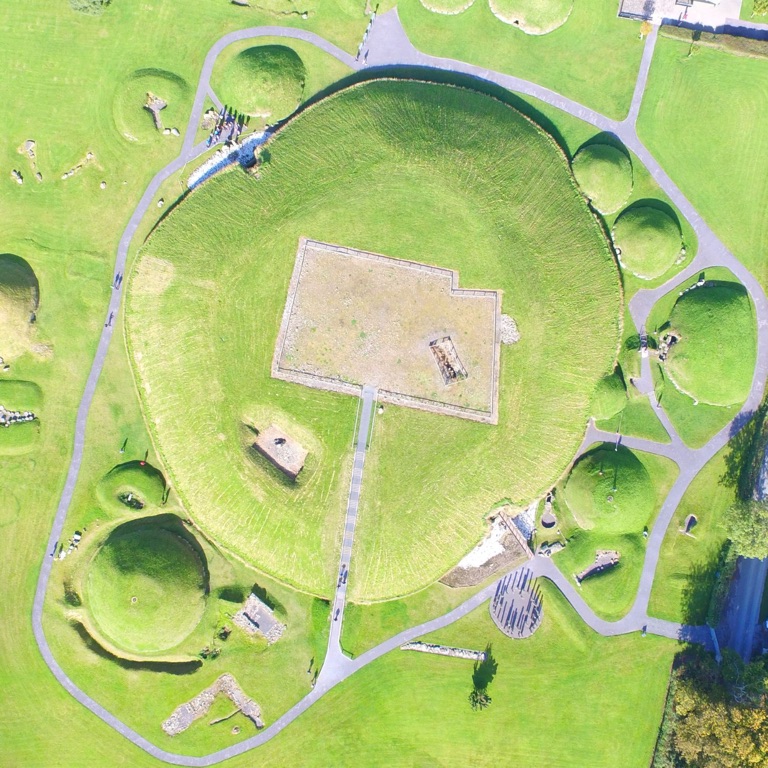Summary
The Significance of Dowth Passage Tomb
The Dowth Passage Tomb is a historic jewel nestled in the Boyne Valley, Ireland. It stands as one of the trio of renowned Neolithic monuments, alongside Newgrange and Knowth. This ancient site, believed to be around 5,000 years old, is lesser-known but holds its own unique charm and mystery. The passage tomb signifies an extraordinary union of human endeavor and celestial alignment. Its creators carefully designed it to capture the winter solstice sunset, illuminating the inner chamber with a warm glow. Dowth not only serves as a burial site but also as a testament to the advanced understanding of astronomy and engineering possessed by the ancient societies of Ireland.
Get your dose of History via Email
Architectural Marvel and Artifacts
Dowth boasts elaborate stone carvings, including spirals and geometric designs that highlight the artistry of the Neolithic period. The tomb’s structure comprises a large main passage, with two smaller tombs branching off. Excavations have unearthed significant archeological finds such as human bones, pottery, and beads, offering insights into the burial rituals and daily life of its builders. Archaeological teams have marveled at the sophistication evident in the tomb’s construction, which has stood the test of time and continues to offer a glimpse into a bygone era.
Preserving and Experiencing Dowth
Efforts to preserve Dowth are ongoing, allowing future generations to explore this profound link to our ancestors. The site’s tranquil surroundings offer a reflective space for visitors to connect with history. Walking through Dowth’s passages, one can’t help but feel a sense of awe for the collective memory it holds. Whether you’re an avid history enthusiast or simply seeking a connection to Ireland’s ancient past, Dowth promises an experience that is both educational and transformative, leaving an indelible mark on all who wander through its hallowed chambers.
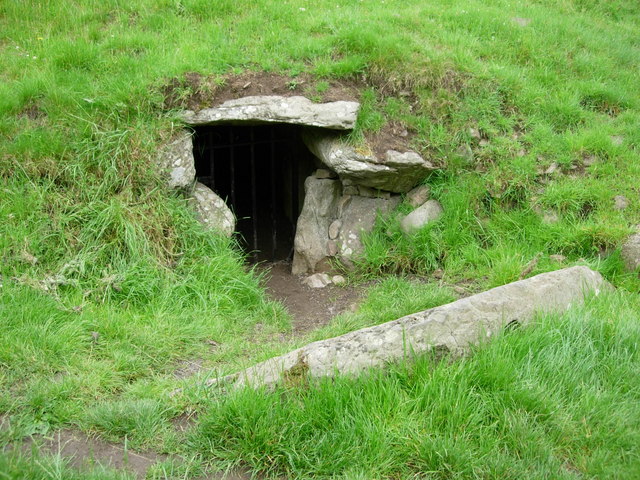
Historical Background of Dowth Passage Tomb
Origins and Discovery
Dowth, one half of the ancient Irish term ‘Dubhadh’, meaning ‘darkness’, is a testament to Ireland’s prehistoric period. Researchers estimate the tomb’s creation to the Neolithic Age, roughly 5,000 years ago. Despite being less explored than its neighboring sites at Brú na Bóinne, Dowth’s discovery has unveiled its historic significance. Early antiquarians took interest in the 19th century, but it wasn’t until recent decades that extensive archaeological work began, shedding light on Dowth’s past.
Astronomical Alignment and Construction
The Dowth Passage Tomb captivates scholars with its complex design aimed at celestial events. Its creators, thought to be ancient farmers, showcased an intricate understanding of solar patterns. They built the tomb so that it aligns with the setting sun on the shortest days of the year. This ingenuity speaks volumes about their skills in construction and astronomy. Within Dowth reside two tombs and a main passageway, surrounded by kerbstones adorned with Neolithic art, emblematic of the tomb builders’ cultural expression.
Mythology and Significance in Irish Lore
Dowth is steeped in mythology, featuring prominently in Irish folklore. Legends of the Tuatha Dé Danann, a mythical race said to have ruled Ireland, are tied to its existence. These stories, passed down for centuries, enrich the site’s cultural importance and illustrate its revered status among the ancients. They provide a captivating narrative backdrop that enhances the enigmatic allure of the Dowth site for both locals and visitors.
Excavations and Findings
Archaeological efforts at Dowth have been fruitful, unearthing artifacts that provide a window into Neolithic Ireland. Findings include human remains, which indicate its use as a burial site, and various ritualistic items. These discoveries help us piece together the lives and beliefs of the tomb’s creators. Each artifact serves as a clue to understanding the complex societal structures and customs prevalent during Ireland’s distant past.
Continued Conservation and Public Interest
Today, Dowth stands as a focal point for heritage and education. Preservation efforts ensure that this monumental piece of human history remains intact for future study and appreciation. As a result, Dowth continues to attract enthusiasts from all walks of life. They come in pursuit of historical knowledge, and the tomb’s quiet grandeur offers a profound experience that bridges millennia, connecting the present to an era shrouded in ancient majesty. This journey through Dowth thus becomes more than just a visit—it transforms into a pilgrimage to the heart of Ireland’s ancestral legacy.
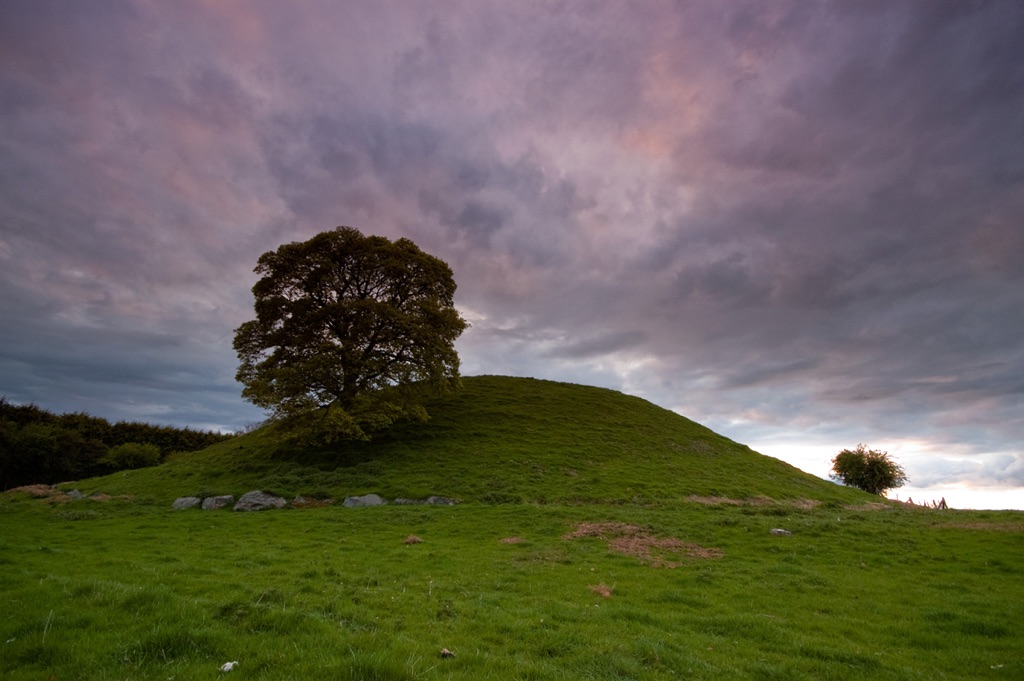
The Discovery of Dowth Passage Tomb
Initial Recognition
Dowth Passage Tomb was first noted in historical records during the 18th century. Antiquarians of the time recognized its potential significance. However, it was not until the 19th century that any formal documentation or research occurred. Johan Thomas Lundbye, a Danish artist, sketched the tomb in 1847, bringing it to broader public attention. His illustrations highlighted the site’s kerbstones and grandeur, hinting at Dowth’s rich history beneath the earth’s surface.
Archaeological Interest
The archaeological community took interest in the late 19th and early 20th centuries. Notably, a team from Harvard University conducted an excavation in 1934. Under the leadership of Hugh O’Neill Hencken, they revealed parts of the site’s intricate passage and chamber systems. This venture marked the first concerted effort to understand Dowth’s structure and origins. Their findings would lay the groundwork for future explorations of this Neolithic wonder.
Discoveries of the Mid-Twentieth Century
Significant developments in the discovery of Dowth came in the 1960s. Professor Michael J. O’Kelly led an excavation that unveiled more of the internal layout and carvings that had been hidden for millennia. This work shed light on Dowth’s possible functions and its relationship with the nearby tombs at Newgrange and Knowth, integral parts of the Brú na Bóinne complex.
New Millennium Excavations
Most recently, in 2018, a drought led to the discovery of previously unseen features around Dowth. Using aerial photography, researchers spotted patterns on the ground indicating human activity. These findings have expanded our understanding of the scale and significance of the Dowth site within the Neolithic landscape of the region.
Legacy and Preservation
Dowth’s discovery story is ongoing, with each finding contributing to its legacy. Today, the site is under the care of the Office of Public Works in Ireland. They ensure its preservation and accessibility for generations to come. The discovery of Dowth continues to captivate and educate those who look to the past to understand our collective human story.
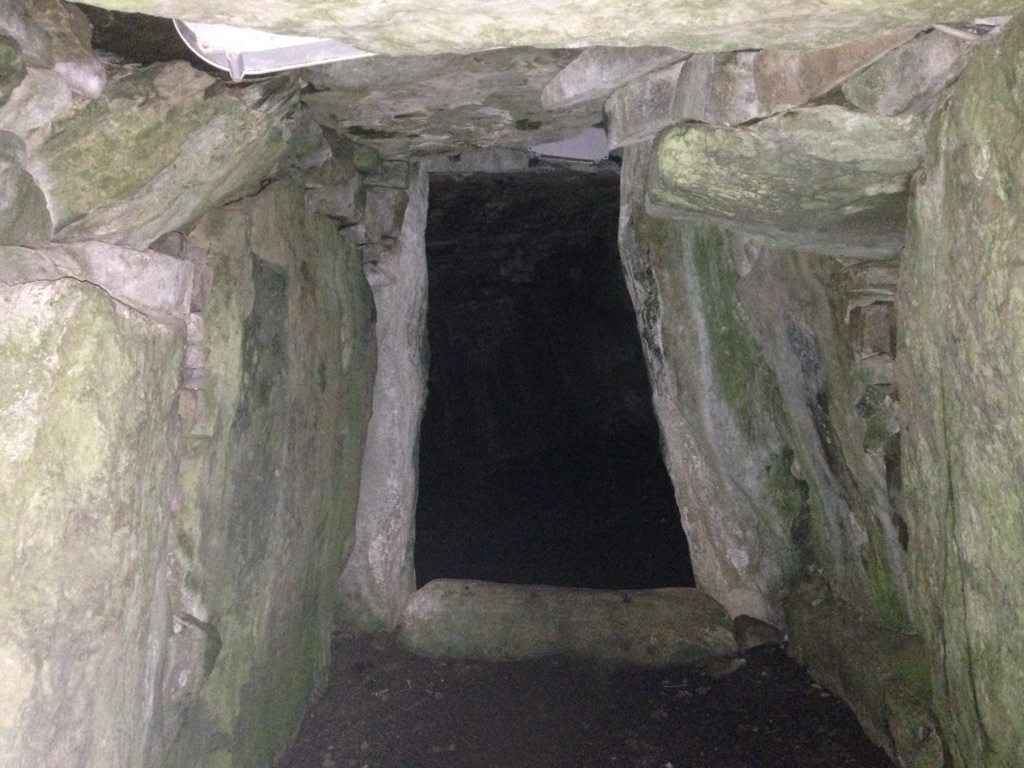
Cultural Significance, Dating methods, Theories and Interpretations
Unveiling Dowth’s Age
Dowth Passage Tomb’s dating relies heavily on radiocarbon testing of human remains and artifacts found within. Grasses and wood from the site provide materials for these tests. Through these methods, researchers estimate the construction of Dowth to date back to around 3200 BCE. This aligns it with the Late Neolithic Period, making it contemporary with other notable passage tombs of Ireland.
Cultural Echoes of Ancient Ireland
The cultural significance of Dowth stretches far beyond its physical structure. This passage tomb reflects the beliefs, societal practices, and celestial knowledge of the Neolithic people. The carvings found within—spirals, circles, and other intricate geometrical patterns—are not just decorations. They’re expressions of a culture deeply connected to nature and the cosmos, echoing the community’s religious and social consciousness.
Theories Behind the Tomb
Several theories aim to decipher Dowth’s purpose and the minds of its creators. Some suggest it served as a calendar, with its alignment to the solstices marking important seasonal events. Others propose a focus on ritual, perhaps relating to ancestry worship or community gatherings. Despite the diversity of interpretations, what’s clear is that Dowth was a site of great significance for its builders, orchestrating a nexus between the land, sky, and community life.
Interpreting the Kerbstones
Researchers pore over the enigmatic symbols on Dowth’s kerbstones, seeking meanings that may have been evident to the Neolithic Irish. These symbols could have been maps, mythological storytelling, or abstract representations of the world. Their true purpose remains a topic of debate, but their presence underscores Dowth’s importance. They link us to the past and ignite our curiosity about these ancient monument builders.
Revising Historical Narratives
Dowth challenges and enlightens our understanding of European prehistory. Its complexity suggests a society that was socially and technologically advanced. As we unravel Dowth’s secrets, we gain new interpretations that often call for a reevaluation of historical records. Dowth spurs a continuous dialogue between the past and the present, allowing us to refine our theories and deepen our appreciation of ancient Irish culture.
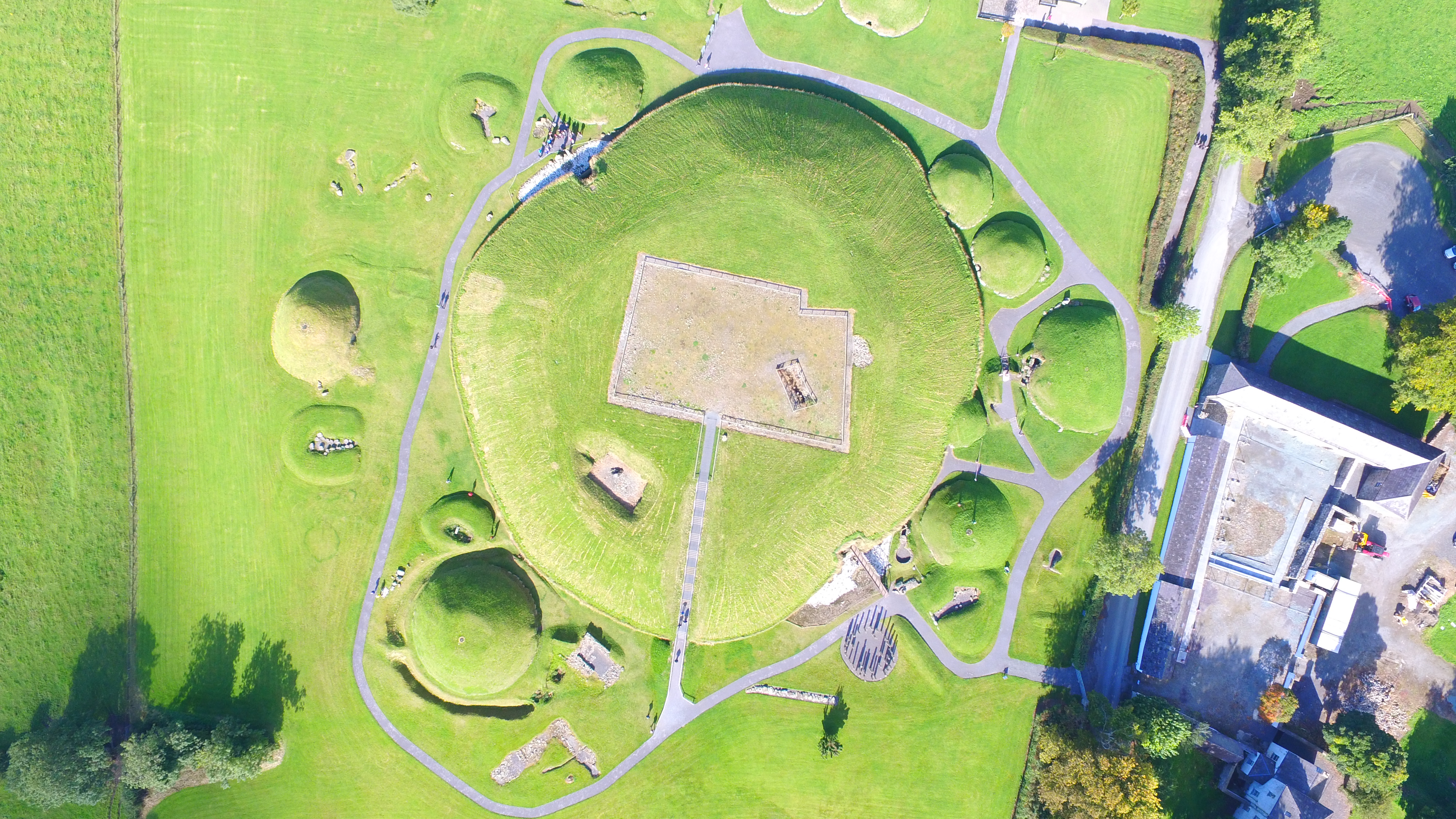
Conclusion and Sources
The Dowth Passage Tomb is a captivating symbol of Ireland’s Neolithic past, offering invaluable insights into the ancient world. Its cultural, astronomical, and spiritual significance is unparalleled, weaving together a story that continues to intrigue both the scholarly community and the public. While the full extent of Dowth’s purpose and the meanings behind its intricate carvings remain shrouded in mystery, the tomb stands as a testament to the sophisticated knowledge and practices of its creators. Continued research and preservation of this historic treasure will undoubtedly yield further revelations, enriching our understanding of humanity’s early achievements.
O’Kelly, M. J. (1982). Early Ireland: An Introduction to Irish Prehistory. Cambridge University Press.
Schot, R. (2010). Monuments and Landscapes in Atlantic Europe: Perception and Society During the Neolithic and Early Bronze Age. Routledge.
Eogan, G. (1997). The Archaeology of Dowth: Monuments on the Brink of Change. Wordwell Books.
Cooney, G. (2000). Landscapes of Neolithic Ireland. Routledge.
Scarre, C. (Ed.). (2005). The Human Past: World Prehistory and the Development of Human Societies. Thames & Hudson.

